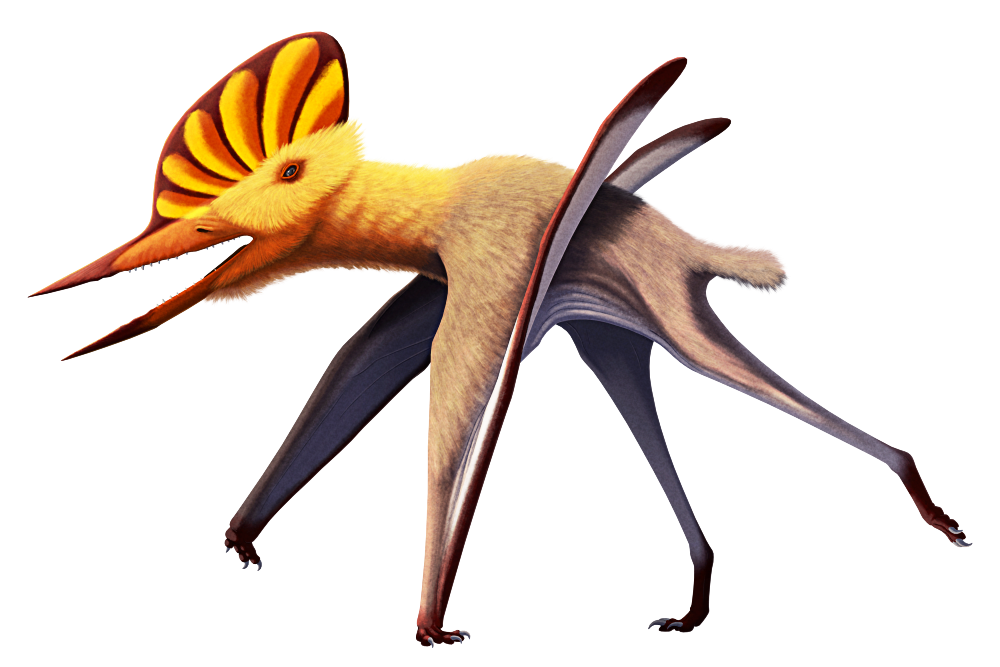Noripterus complicidens was a pterosaur that lived in what is now Mongolia and northwest China during the early Cretaceous, about 140 million years ago.
It had a wingspan of up to 4m (~13′), with a head-and-body length of around 1.2m (~4′), and like other dsungaripterids it had a distinctively reinforced skull, with a toothless beak at the front of its jaws and strong widely-spaced teeth further back – an arrangement that was probably used to catch and then powerfully crack open hard-shelled prey.
Unlike other pterosaurs, however, Noripterus also had some very unusual feet.
All other known pterosaurs seem to have had plantigrade hindlimbs, standing and walking with the whole foot on the ground. But Noripterus had toe joints that looked more like those of theropod dinosaurs than other pterosaurs, with a higher level of upward flexibility and potentially a more digitigrade posture standing on just its toes.
With dsungaripterids already having fairly stout body proportions that suggest they spent a lot of time walking around on the ground, Noripterus may have been even more agile and adept at terrestrial locomotion. Digitigrady is generally more efficient for moving at higher speeds, so this pterosaur might have been a runner behaving similarly to modern ground birds, preferring to sprint away from threats on foot rather than launch itself into the air.

